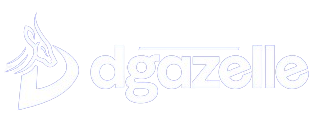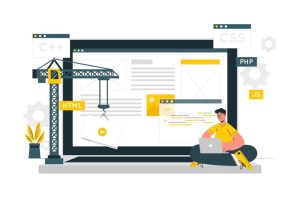How to increase profits with customers is a topic that comes up time and time again on my blog. I have been asked, “Why should it matter if we increase our profits?” The answer is simple: Because businesses — no matter the sector — are always looking for ways to increase their revenues and reduce expenses.

Digital marketing and online advertising tools have made it easier than ever before to find new customers and drive them towards a purchase through a cost-effective ad campaign.
How you increase your profits with your audience in 2022 is a great issue and one that I decided to explore in this blog article.
Can you increase profits with customers more than it is now?
Absolutely yes! You can increase your profits with customers more than it is now.
The reason why I say this is that the internet has changed the way people shop and buy products. The internet has given an opportunity to anyone who wants to become a retailer.
With the help of technology, it has become easy for companies like Amazon to sell their products online. Therefore, people are now able to buy things online without even leaving their homes.

However, will you be committed to doing the work it takes to increase your profits with customers? Let’s find out!
How to increase profits for small business in 2022?
Increasing your profits with customers is something every business owner should consider doing. In fact, if you cannot increase your profits with customers, it shows you are in the wrong business. Down below, I outline 7 ways you can utilize to increase your profits with customers.
1. Improve your customer service.
This is the most important thing you can do to increase your profits. Customer service is the foundation of any business, and it sets the tone for how a customer will perceive your company. A good customer service policy is one that will help you get repeat customers, which can in turn increase sales and profits.
A good customer service policy should also be clear and concise, so that every staff member knows what their role is and how they are expected to perform it. It should also be easy to understand by both employees and customers because it needs to be effective at keeping everyone in line.

Here are some ideas for improving your customer service:
Be prepared – Have everything ready before they arrive. This includes having a list of questions and answers, as well as prices and other information, in an easy-to-use format.
Listen – Don’t talk while they’re talking; let them finish what they’re saying before responding. This will make them feel that you’re listening and paying attention, which will increase their trust in you and make them more likely to buy from you again.
Be helpful – When customers need help or advice, be there for them with answers or suggestions. You may think that this isn’t worth it because it’s too much work, but if your customers are happy with their experience, then it could end up costing you less in sales than any extra effort spent on customer service issues would have cost if left unresolved by yourself.
2. Create a customer-centric culture.
Customer-centricity is the art of treating your customers as “friends” and making sure they feel appreciated and heard. It’s more than just “people are important” or “we want to be the best at what we do” — it means actually having a hand in the customer experience.
Create a customer-centric culture where every employee is accountable for developing relationships with customers, for providing excellent service, and for increasing profitability through superior customer service, product quality and reliability, and innovation.
Targeting customers by creating a customer-centric culture will help you better understand who your customers are. It will also help you identify which ones are likely to become long-term clients or partners. You can then use this information to create relevant content, offer promotions or discounts and ensure that you have the right products in stock at all times.
3. Pay attention to your customers.
The most important thing to do is to pay attention to your customers. If you can find out what they want and how they feel, you’ll be able to give it to them.
This doesn’t mean that you have to know everything about your customers, or even that you need to know everything about them. You just have to know enough about them so that you can figure out what their needs are and how you can satisfy those needs. This knowledge can also help you in Creating great content
You may not be able to meet every single one of those needs, but if you can find a few things that your customers want, then you’re on your way toward being an expert in customer service and getting more sales from your business.
Don’t make the mistake of thinking that your customers are the same as you.
A customer is someone who has paid for a product or service, but that doesn’t mean they’re not also a brand advocate. They will be loyal to you if you keep them happy with products and services that meet their needs.
When you treat your customers well, they will return the favor by sharing your business on social media and recommending it to others. Customers are loyal to brands they trust, which means they want to stay loyal to your business as well.
4. Focus on the customers that matter most.
The most important thing to remember is that your customers are not all the same. Your business will have a different customer base than your competitor, and that means you need to focus on what matters most.
If you want to increase your profits with customers, you should focus on the customers that matter most. You can do this by focusing on the services that your customers value most.
For example, if a customer wants a website but doesn’t have time to look for a web designer, you could provide them with a free website design service.

In addition, some businesses specialize in providing customer service in order to differentiate themselves from competitors. Customer service is often expensive and time-consuming, but it allows companies to charge higher prices for their products or services because they don’t have to worry about low margins in other areas of their business.
5. Establish effective and consistent communication channels.
If you’re a small business owner, it’s likely that you haven’t yet figured out how to increase your profits. You may have some ideas, but they’re probably not working.
If you’re like most small business owners, money is tight and growth is slow. You don’t want to spend money on marketing and promotions because you need to keep your overhead low.
And if you are trying to grow your business, you’ll probably do anything in your power to avoid paying for advertising or promotions that would help get your name out there.
But what if I told you that improving customer service could be the key to increasing your profits?
It all starts with effective communication.
6. Automate wherever possible.
Can you increase profits with automation?
The answer is yes, if you are able to automate the process. Automation allows you to increase your profit by reducing costs and increasing efficiency.
The first thing you need to do is identify where your money is going. If you are selling directly to customers, then it will be easy to see where your sales are coming from. If you have multiple stores, or even wholesale accounts, then it will be harder to track your expenses and profits. However, if you can see where all of those transactions are coming from, then it becomes much easier to spot any areas where there is room for improvement.
Once you know where your money is going, then start looking at ways that you can improve the efficiency of each step of the process. If there are any steps that could be automated, then it would make perfect sense to do so as soon as possible!
7. Constantly evolve, but communicate the changes effectively to your customers.
If you want to make more profits in your business, the most important thing is to constantly evolve, but communicate the changes effectively to your customers.
If you have a product or service that is not meeting consumer needs and expectations, you need to know what those needs and expectations are. This can be done through surveys and focus groups, or by talking directly with consumers.

Once you know what consumers want, you can then create new products or services that meet those needs and expectations. But in order for this process to work, it’s important that you communicate with customers about changes, so they understand what’s going on behind the scenes.
Conclusion
To increase profits with your customers, you have to give them the next big thing!
Customers are always looking for the next best thing. Businesses that do not keep up with the latest trends may find themselves left behind in the race for customers. However, it is important to stay relevant by evolving your business model and services to make sure you are providing the best possible service to your customers at all times.






